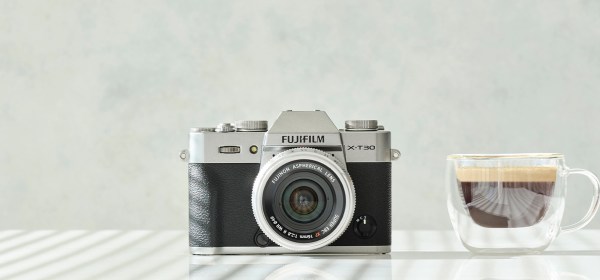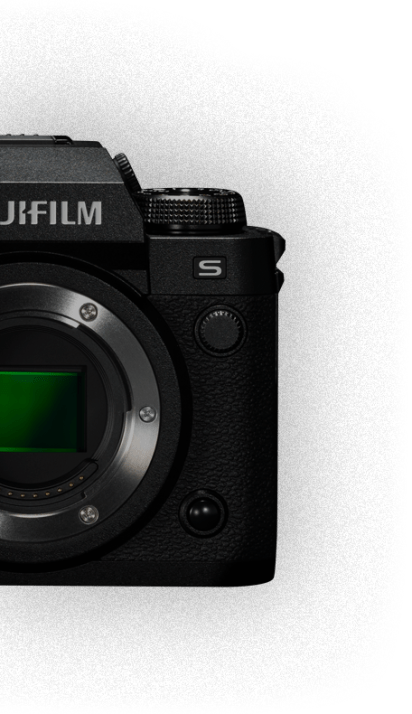
Wildlife filmmaking is a complex and demanding art form that requires the right equipment and technique to capture stunning images of nature.
Mirrorless cameras are becoming increasingly popular with wildlife cinematographers due to their superior image quality and intuitive design.
In this guide, we’ll provide you with all the information you need to get started using a mirrorless camera for wildlife filmmaking.
We’ll explain what makes these cameras different from other types of cameras, how to set them up for shooting in the wild, and tips for achieving the highest quality footage possible.
Whether you’re an experienced pro or just starting out, this guide will teach you everything you need to know about using a mirrorless camera for wildlife filmmaking.
 Its lightweight and compact design allows it to be taken on any journey, making it a great choice for capturing stunning shots of nature in its most pristine form.
Mirrorless cameras are also incredibly versatile, offering features such as interchangeable lenses, manual settings, and electronic viewfinders. These features enable you to capture shots with unparalleled clarity and detail, allowing you to bring your wildest filmmaking dreams to life.
With all these advantages in mind, it’s no wonder why so many wildlife filmmakers are turning to mirrorless cameras when it comes time to shoot their next project. To get started, let’s take a look at what you need to do in order to set up your mirrorless camera for success.
Its lightweight and compact design allows it to be taken on any journey, making it a great choice for capturing stunning shots of nature in its most pristine form.
Mirrorless cameras are also incredibly versatile, offering features such as interchangeable lenses, manual settings, and electronic viewfinders. These features enable you to capture shots with unparalleled clarity and detail, allowing you to bring your wildest filmmaking dreams to life.
With all these advantages in mind, it’s no wonder why so many wildlife filmmakers are turning to mirrorless cameras when it comes time to shoot their next project. To get started, let’s take a look at what you need to do in order to set up your mirrorless camera for success.
 If you’re shooting handheld, always remember to take deep breaths before pressing record and move slowly with purpose so as not to jostle the shot too much.
By following these simple best practices for wildlife filmmaking, you’ll be well on your way to creating beautiful cinematic pieces with your mirrorless camera.
If you’re shooting handheld, always remember to take deep breaths before pressing record and move slowly with purpose so as not to jostle the shot too much.
By following these simple best practices for wildlife filmmaking, you’ll be well on your way to creating beautiful cinematic pieces with your mirrorless camera.
What Is A Mirrorless Camera?
A mirrorless camera is like an untapped wellspring of creative potential. It’s the perfect tool for wildlife filmmakers looking to take their shots to the next level with superb image quality and remarkable low light capabilities. Its lightweight and compact design allows it to be taken on any journey, making it a great choice for capturing stunning shots of nature in its most pristine form.
Mirrorless cameras are also incredibly versatile, offering features such as interchangeable lenses, manual settings, and electronic viewfinders. These features enable you to capture shots with unparalleled clarity and detail, allowing you to bring your wildest filmmaking dreams to life.
With all these advantages in mind, it’s no wonder why so many wildlife filmmakers are turning to mirrorless cameras when it comes time to shoot their next project. To get started, let’s take a look at what you need to do in order to set up your mirrorless camera for success.
Its lightweight and compact design allows it to be taken on any journey, making it a great choice for capturing stunning shots of nature in its most pristine form.
Mirrorless cameras are also incredibly versatile, offering features such as interchangeable lenses, manual settings, and electronic viewfinders. These features enable you to capture shots with unparalleled clarity and detail, allowing you to bring your wildest filmmaking dreams to life.
With all these advantages in mind, it’s no wonder why so many wildlife filmmakers are turning to mirrorless cameras when it comes time to shoot their next project. To get started, let’s take a look at what you need to do in order to set up your mirrorless camera for success.
Setting Up Your Mirrorless Camera
Once you’ve chosen the perfect mirrorless camera for your wildlife filmmaking project, the next step is to select the right lens and adjust the settings. With the right lens and settings, you’ll be able to capture stunning wildlife footage that really brings your vision to life.Choosing A Lens
When it comes to setting up your mirrorless camera for wildlife filmmaking, one of the key components is choosing the right lens. The focal length of the lens will determine how close you can get to your subject and its field of view, so select a lens that suits your shooting style. Image stabilization should also be considered when selecting a lens, as this will help counter any shake in your shots and ensure sharp images. With the wide range of lenses available today, you won’t have any trouble finding one that fits your needs – just make sure to do your research before making a purchase!Adjusting Settings
Once you have the right lens for your setup, the next step is to adjust the settings. I recommend manual focus, as this will allow you to be more precise when focusing on a subject. Additionally, shutter speed is important for capturing sharp images; slower speeds will capture motion blur, while faster speeds freeze motion. With these adjustments in place, you can trust that every shot will look great and capture all the beauty of wildlife in its natural habitat.Tips For Achieving High Quality Footage
Now that your mirrorless camera is set up and ready to go, it’s time to discuss some tips for achieving high quality footage. Stabilization techniques are a key component for getting quality wildlife shots, so make sure you have a tripod or steadycam on hand. Additionally, sound recording is of utmost importance when filming wildlife – be sure to use an external mic and wind filter to capture the best audio possible. When you’re out in the field capturing footage, try to anticipate what’s coming next and position yourself accordingly. Find the perfect angle and focus on capturing the details that will bring the scene alive. If you’re shooting handheld, always remember to take deep breaths before pressing record and move slowly with purpose so as not to jostle the shot too much.
By following these simple best practices for wildlife filmmaking, you’ll be well on your way to creating beautiful cinematic pieces with your mirrorless camera.
If you’re shooting handheld, always remember to take deep breaths before pressing record and move slowly with purpose so as not to jostle the shot too much.
By following these simple best practices for wildlife filmmaking, you’ll be well on your way to creating beautiful cinematic pieces with your mirrorless camera.
Best Practices For Wildlife Filmmaking
When filming wildlife it’s important to be aware of the gear you select and the lighting techniques used. Mirrorless cameras are a great tool for capturing stunning images of animals in their natural habitat. They offer flexibility and convenience in creating a unique cinematic experience. Here are three best practices when using mirrorless cameras for wildlife filmmaking:- Make sure to use larger lenses for more distant shots, and smaller lenses for close-up action shots.
- Use an external monitor or viewfinder that allows you to see what the camera is capturing without having to look through the lens itself.
- Utilize manual settings such as shutter speed, ISO, and aperture to create the desired aesthetic look you’re aiming for.
The Benefits Of Using A Mirrorless Camera For Wildlife Filmmaking
After all the hard work and preparation, it’s time to talk about the real star of the show – the mirrorless camera. Sure, a DSLR can get you good results but if you want to take your wildlife filmmaking to the next level, you’ll need something a bit more versatile. That’s why I’m so fond of mirrorless cameras – they offer incredible portability and versatility in a lightweight package. Mirrorless cameras are incredibly intuitive and easy-to-use, even if you’re not a professional photographer. They offer great image quality and an extensive range of features such as video stabilization, burst mode shooting, RAW file formats and 4K recording support. Plus, their small size makes them perfect for capturing wildlife up close without scaring them away. And with lots of accessories available such as lenses and gimbals, your options for capturing stunning wildlife footage are endless!Can the Techniques Used for Wildlife Filmmaking with a Mirrorless Camera be Applied to Business Videos?
Can the techniques used for wildlife filmmaking with a mirrorless camera be applied to business videos? Absolutely! Using mirrorless cameras for business videos allows for flexibility in capturing high-quality footage, just like in wildlife filmmaking. From capturing dynamic shots to showcasing products or services in a visually appealing manner, mirrorless cameras offer convenience and professionalism for creating impactful business videos.